A journey through history: SZ's national intangible cultural heritages (I)
Writer: Wei Jie | Editor: Zhang Zhiqing | From: Shenzhen Daily | Updated: 2024-12-23
With a history of less than half a century, Shenzhen has gained recognition in China, and even globally as a youthful and innovative city that welcomes people from all corners of the world. However, it might come as a surprise to many that Shenzhen boasts a rich array of intangible cultural heritages, comprising a total of 288 heritage items of various levels, including eight national cultural treasures. Let’s delve into the exploration of these national-level intangible cultural heritages.
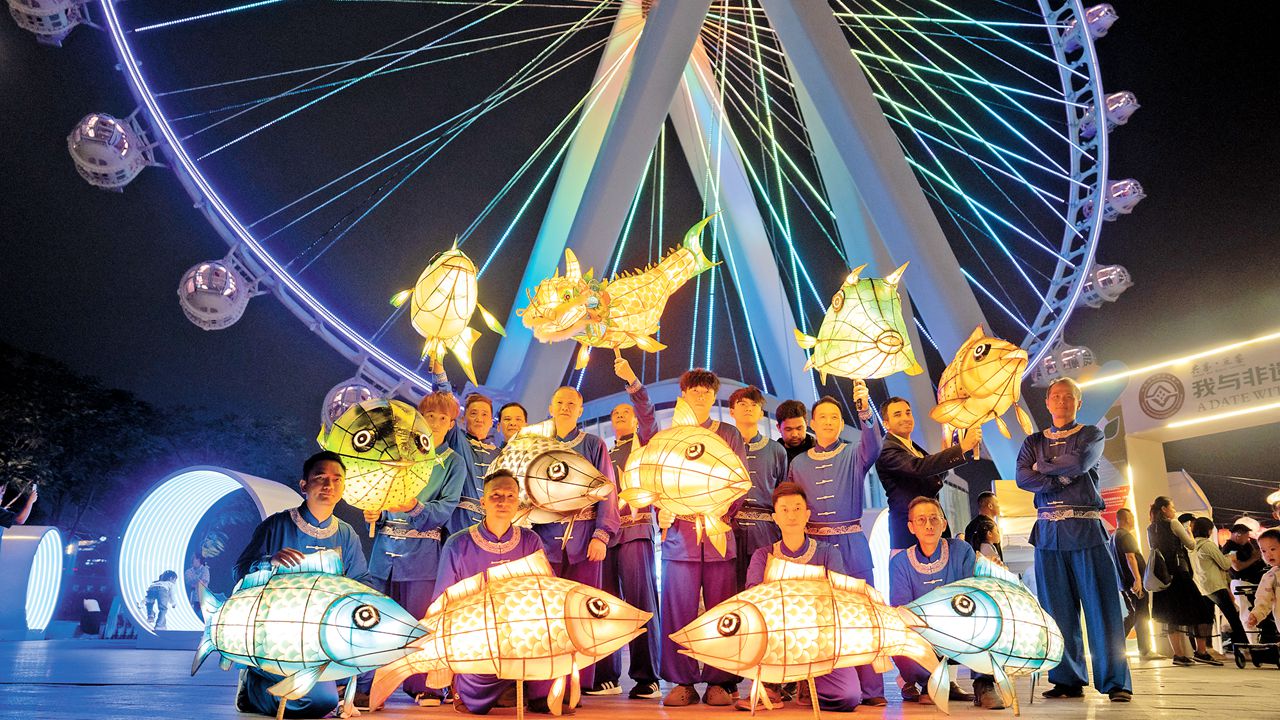
Shatoujiao Fish Lantern Dance performers pose for a photo with fish lanterns. Lin Jianping
Xiasha Ancestoral Worship
Dating back to as early as the Southern Song Dynasty (1127-1279), the ancestor worship practices in Xiasha Village, Futian District, initially involved simple daily rituals of burning incense and performing kowtow in the mornings and evenings. Over the time, a complete and meticulous set of procedures for ancestral worship and ancestral hall ceremonies evolved since the late Ming Dynasty (1368-1644) after the descendants of the Huang clan built the Huang Siming Ancestral Hall in the village to honor their ancestors. These rituals have been passed down through generations and continue to be observed the present day.
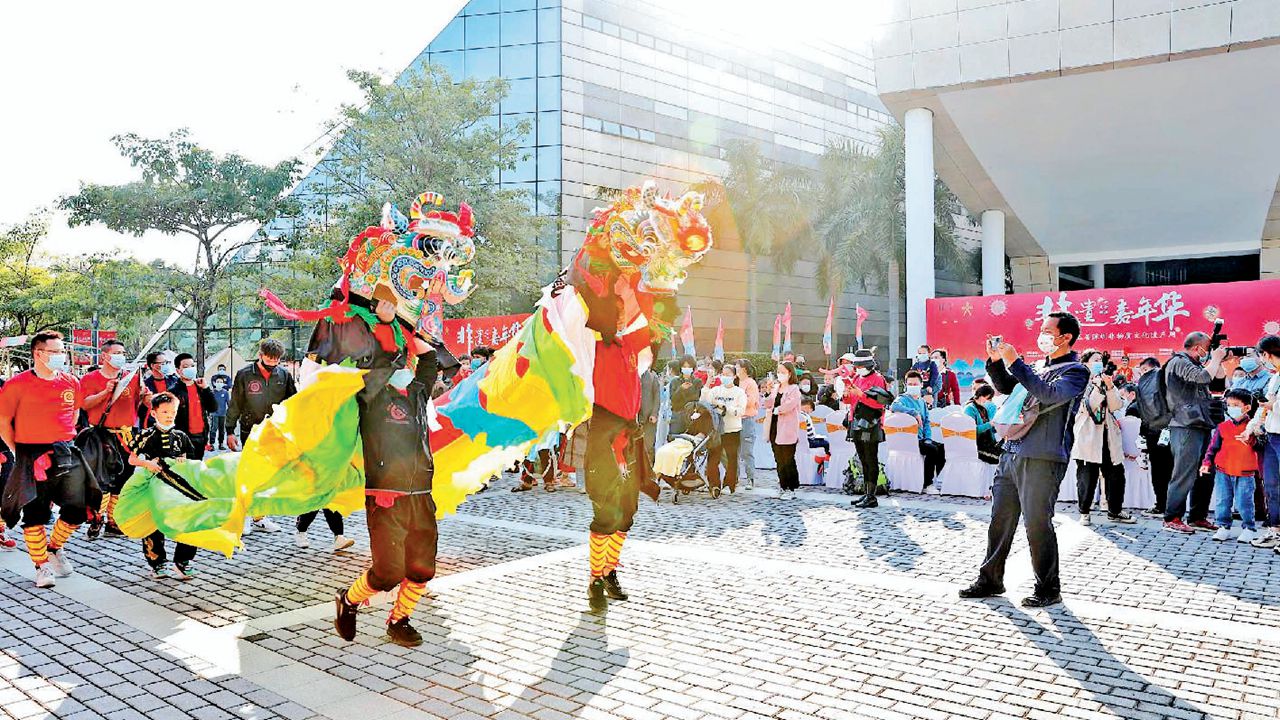
Dachuankeng Village Kylin Dance. File photos unless otherwise stated
During ancestral worship in Xiasha, Poon Choi, basin food in English, plays a crucial role. This dish consists of various food ingredients served in a large basin, typically meant for a table of around 10 people. The history of Poon Choi is believed to trace back to the late Southern Song Dynasty, when Emperor Xiangqing fled to what is now the Shenzhen Bay area to escape from the Jin soldiers. Local villagers pooled their resources to gather precious ingredients in a basin to host a feast for the emperor. From then on, the tradition of serving a wide variety of food ingredients in a large basin took root in the region, enduring through time and carrying on its legacy.
The Xiasha Poon Choi Feast made media headlines Feb. 23, 2002 when more than 60,000 people attended a grand basin feast featuring 5,310 tables in the community square of Xiasha Village. The scale of this event and the number of participants set two Guinness World Records, earning it the title of the “largest gathering in the Guinness World Records.”
Shangchuan Huang Liansheng Lion Dance
Shangchuan Village is located in Xin’an Subdistrict, Bao’an District. Built in the Ming Dynasty, it is a typical Canton-style ancient village. Dating back to the late Qing Dynasty (1644-1911), the lion dance gained wider popularity in the 1970s when the local martial arts master, Huang Liansheng, created the Shangchuan Huang Liansheng Lion Dance.
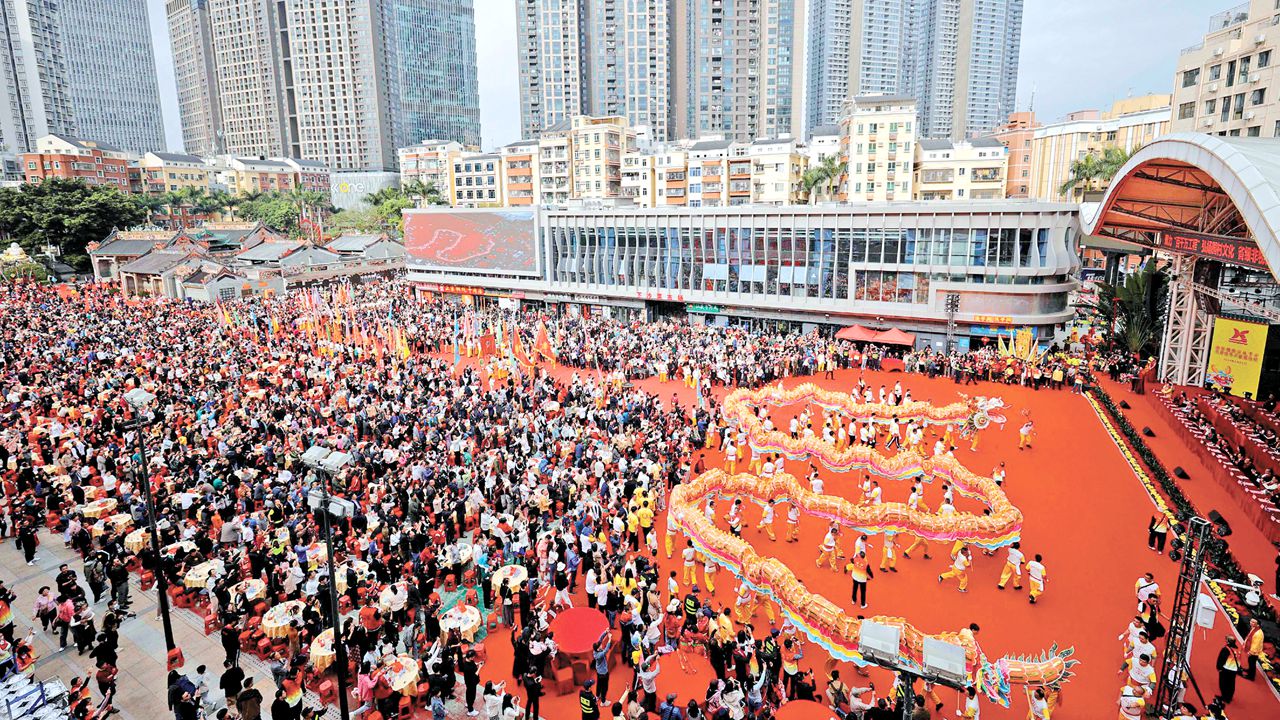
Shangchuan Huang Liansheng Lion Dance.
The Huang’s lion dance distinguishes from other lion dances by rooting its moves in martial arts, boasting a series of unarmed or weapon-based kung fu routines during the dance performances. In addition, the Huang’s lion dance features grand and vigorous movements that showcase swift and agile footwork.
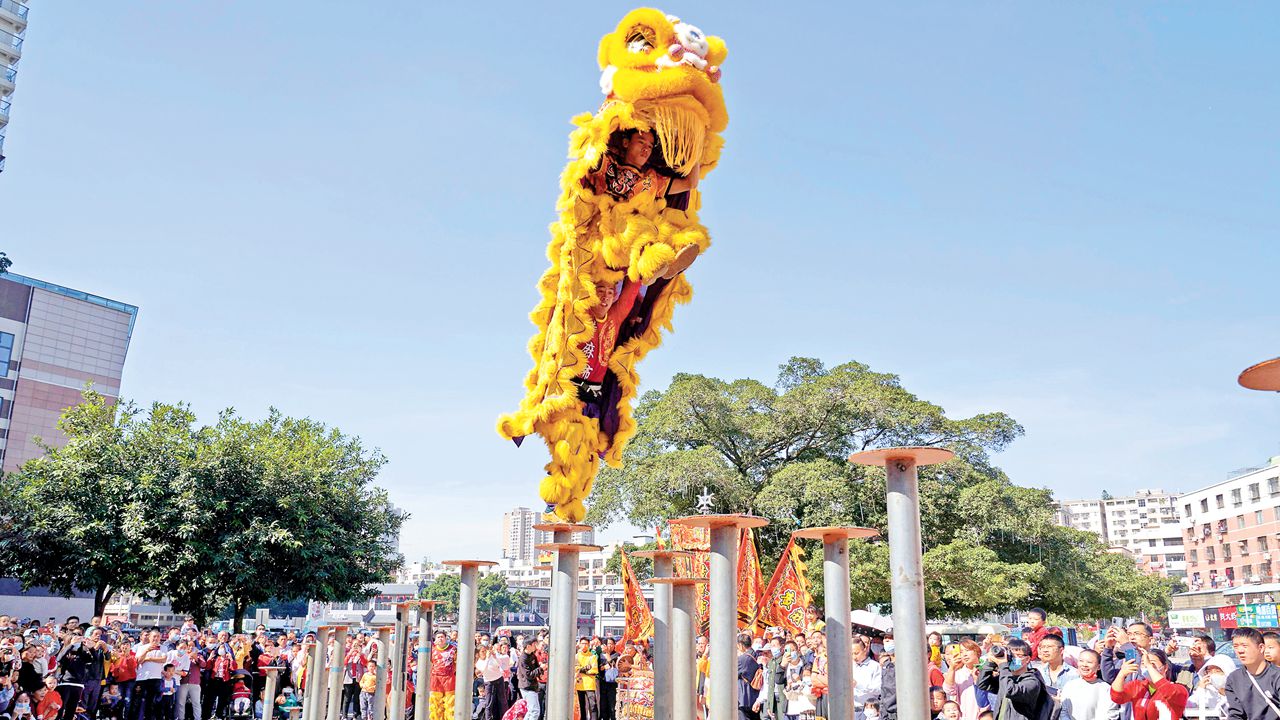
Shangchuan Huang Liansheng Lion Dance.
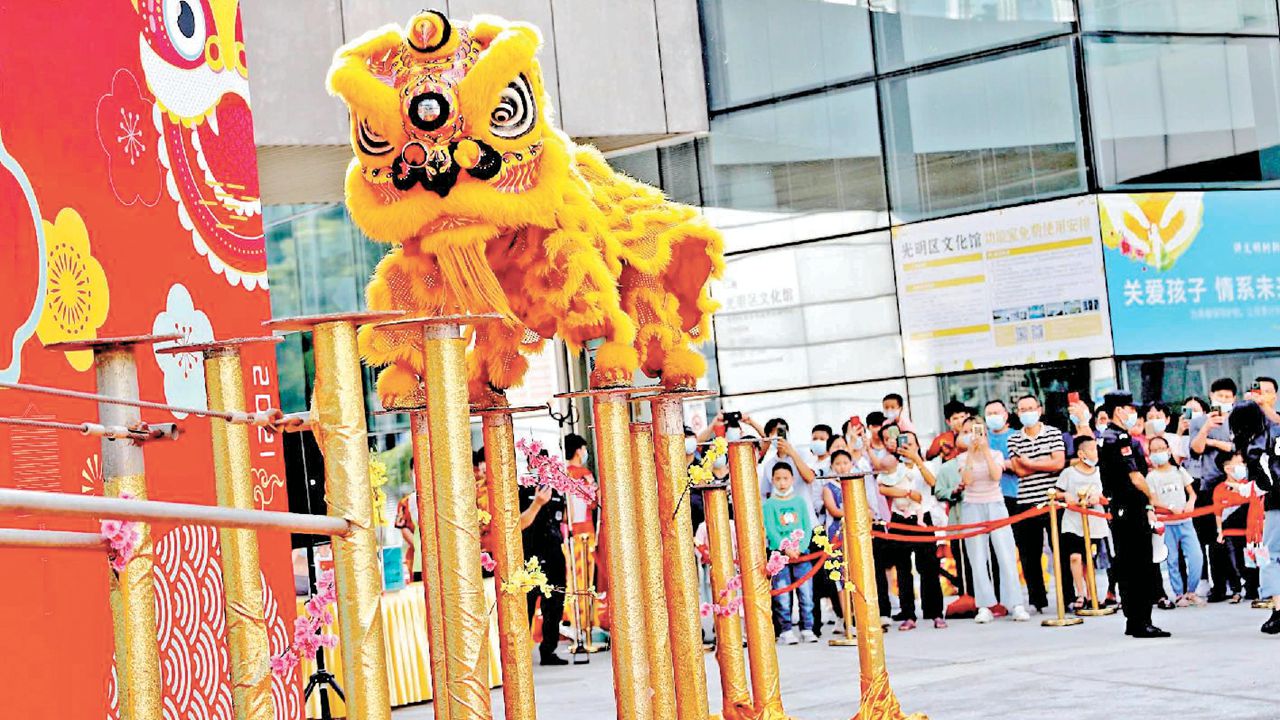
Shangchuan Huang Liansheng Lion Dance.
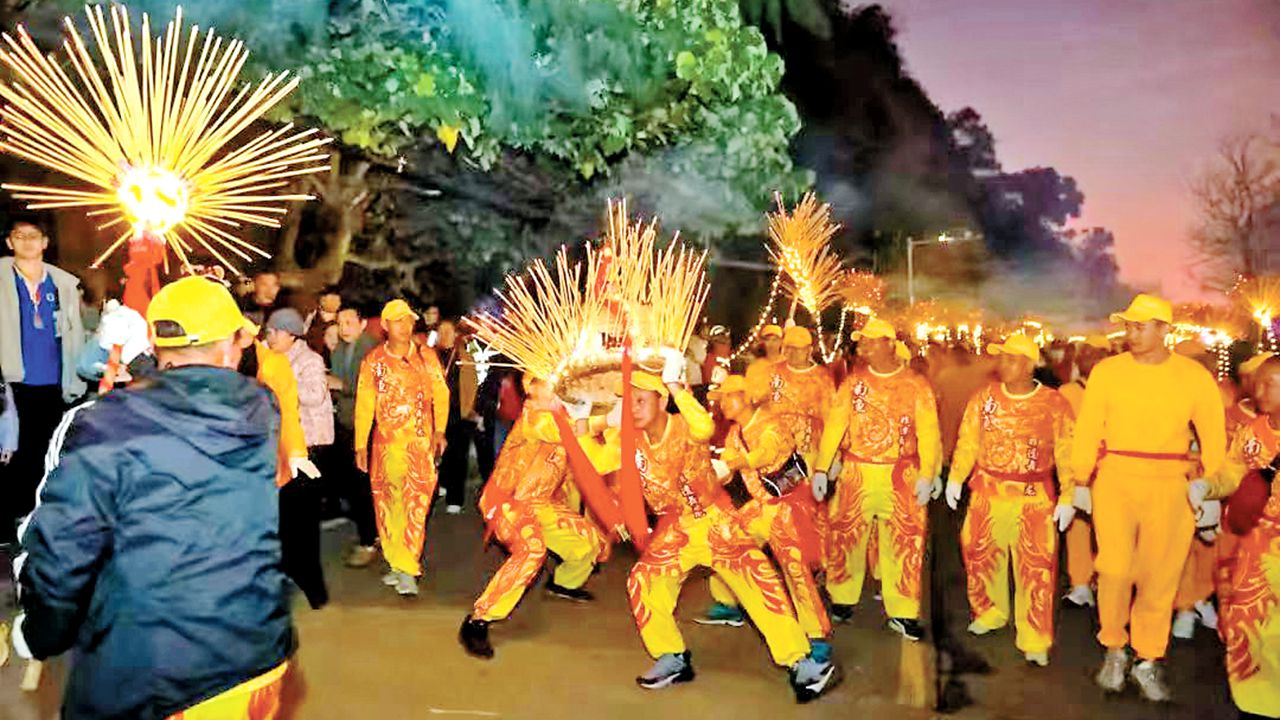
Shangchuan Huang Liansheng Lion Dance.
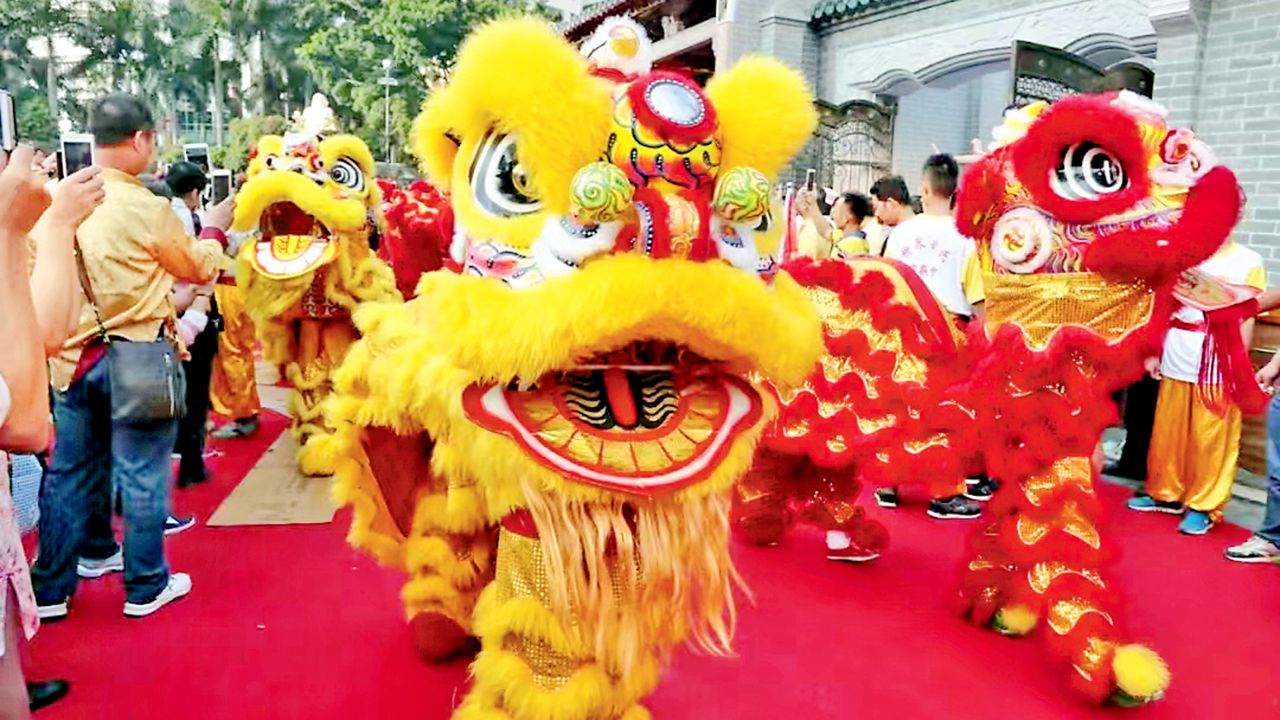
Shangchuan Huang Liansheng Lion Dance.
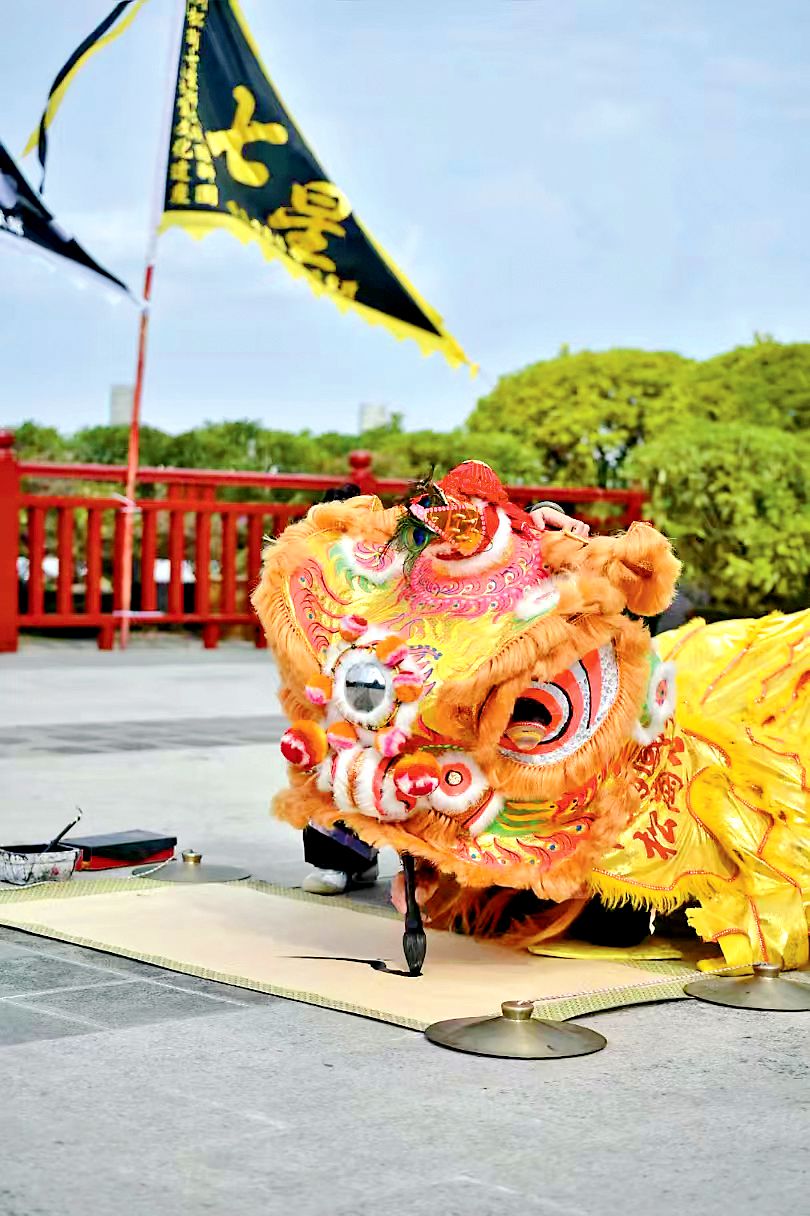
Shangchuan Huang Liansheng Lion Dance.
Shatoujiao Fish Lantern Dance
When discussing Shenzhen’s intangible cultural heritage, one cannot overlook Shalanxia Village in Shatoujiao Subdistrict of Yantian District. This Hakka village, home to the Wu clan, has a history of more than 300 years, and is the birthplace of the nationally acclaimed Shatoujiao Fish Lantern Dance.
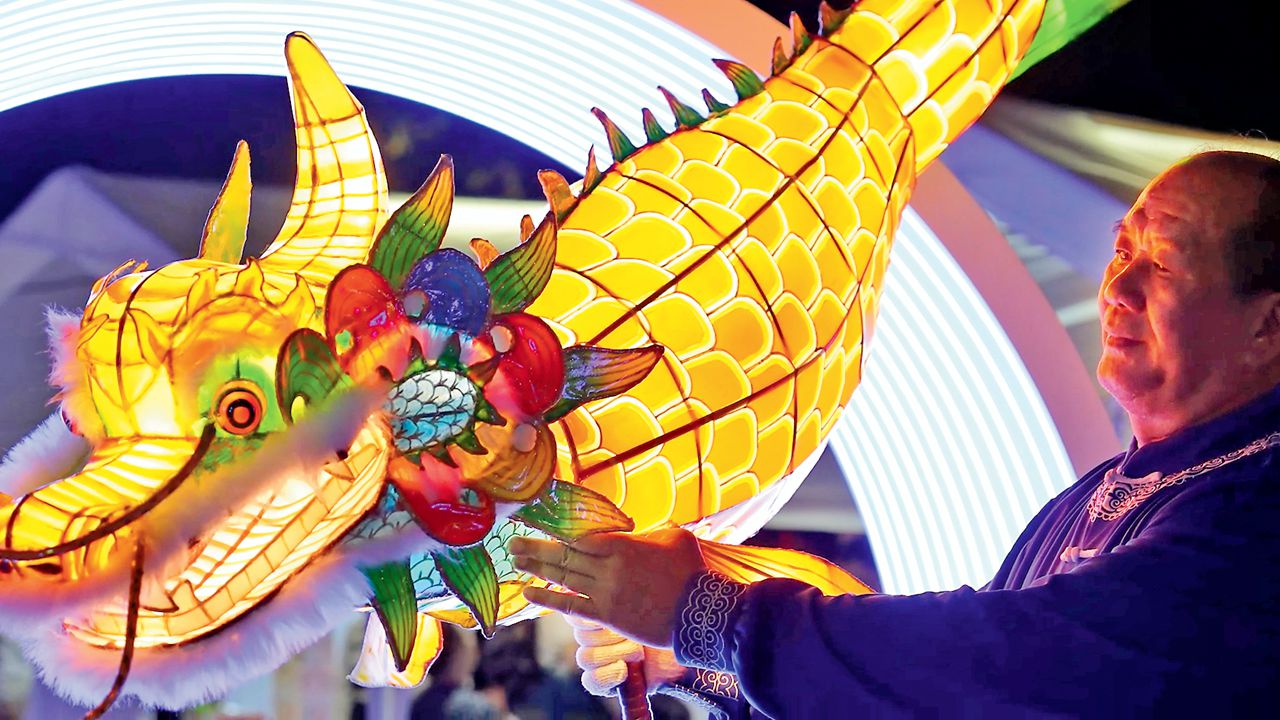
Shatoujiao Fish Lantern Dance Performance.
The Wu ancestors made their living by fishing on the sea, and developed a unique dance that incorporated the movements of fish. The dance was performed during festivals to pray for safety and reunion. In the Hakka dialect, the pronunciation of “fish” is similar to that of “Wu,” which is why the Wu Lantern Dance gradually became known as the Fish Lantern Dance.
In 2008, the Shatoujiao Fish Lantern Dance made it into the national intangible cultural heritage list. It has since been performed in Southeast Asia and Australia, and has participated in various overseas competitions.
Dachuankeng Village Kylin Dance
The kylin is a mythical creature from ancient Chinese folklore, and regarded as an auspicious symbol by the Hakka people. The kylin dance is usually performed during festive occasions to express people’s yearning for a life filled with good fortune, prosperity and thriving business.

Dachuankeng Village Kylin Dance.
A notable kylin dance in Shenzhen is that performed in Dachuankeng Village, located in Dalang Subdistrict of Longhua District. It is believed that the Dachuankeng Village Kylin Dance originated during the Ming Dynasty under the reign of Emperor Jiajing, boasting a history of more than 600 years.
The kylin prop used in Dachuankeng’s performance typically measures 3 to 4 meters in length, with the longest reaching up to 6 meters. The head of the kylin is crafted with wood and bamboo, featuring movable eyes and a mouth that can open and close, while its body is made of silk adorned with shiny scales.
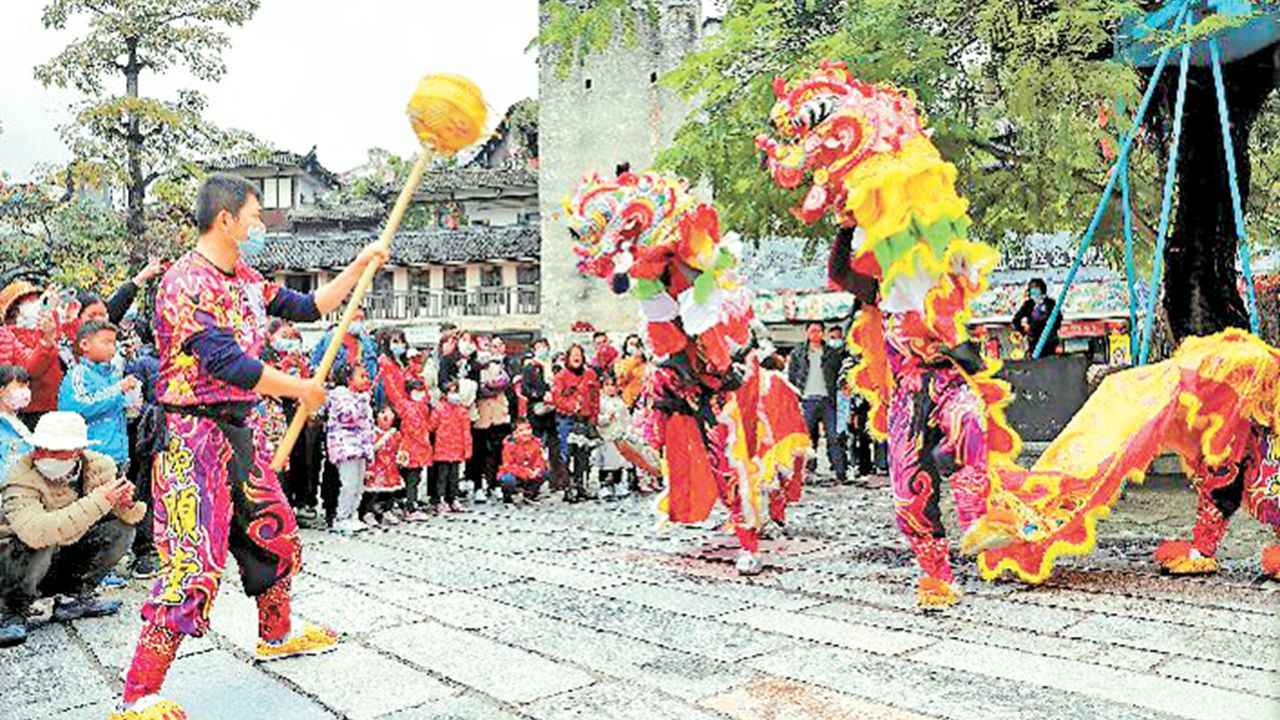
Dachuankeng Village Kylin Dance.
During the performance, one dancer handles the kylin’s head while the other controls the tail, working in harmony to vividly portray a range of emotions such as joy, happiness, anger, sadness, drunkenness, sleepiness, and reverence.